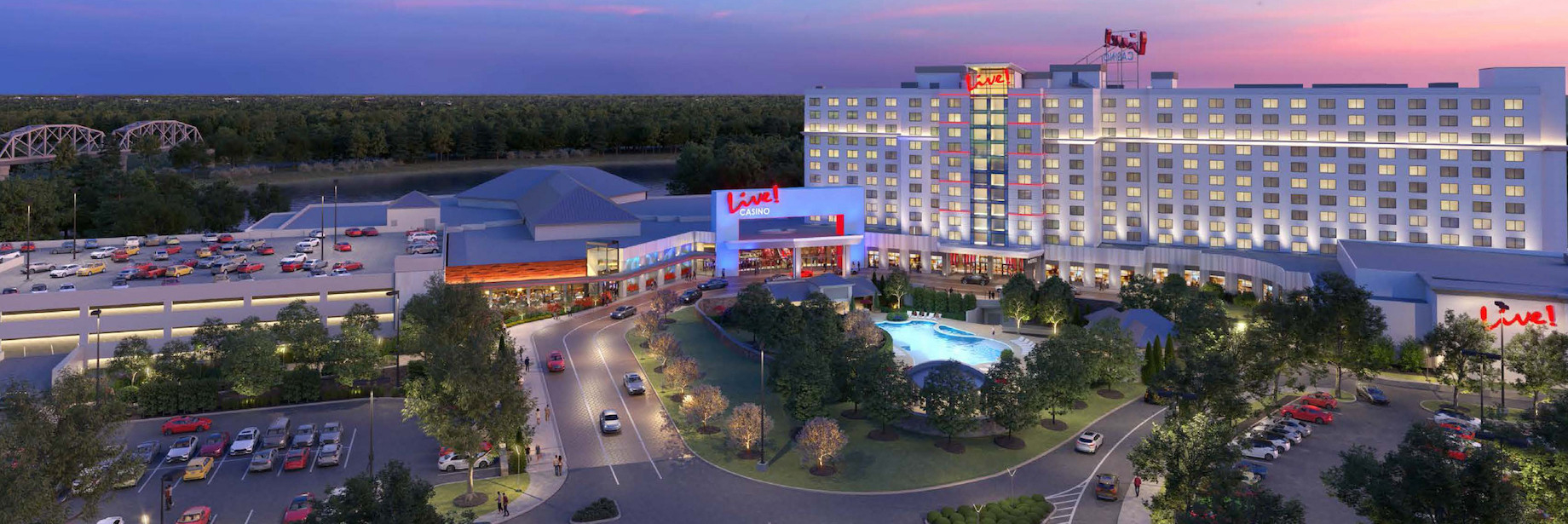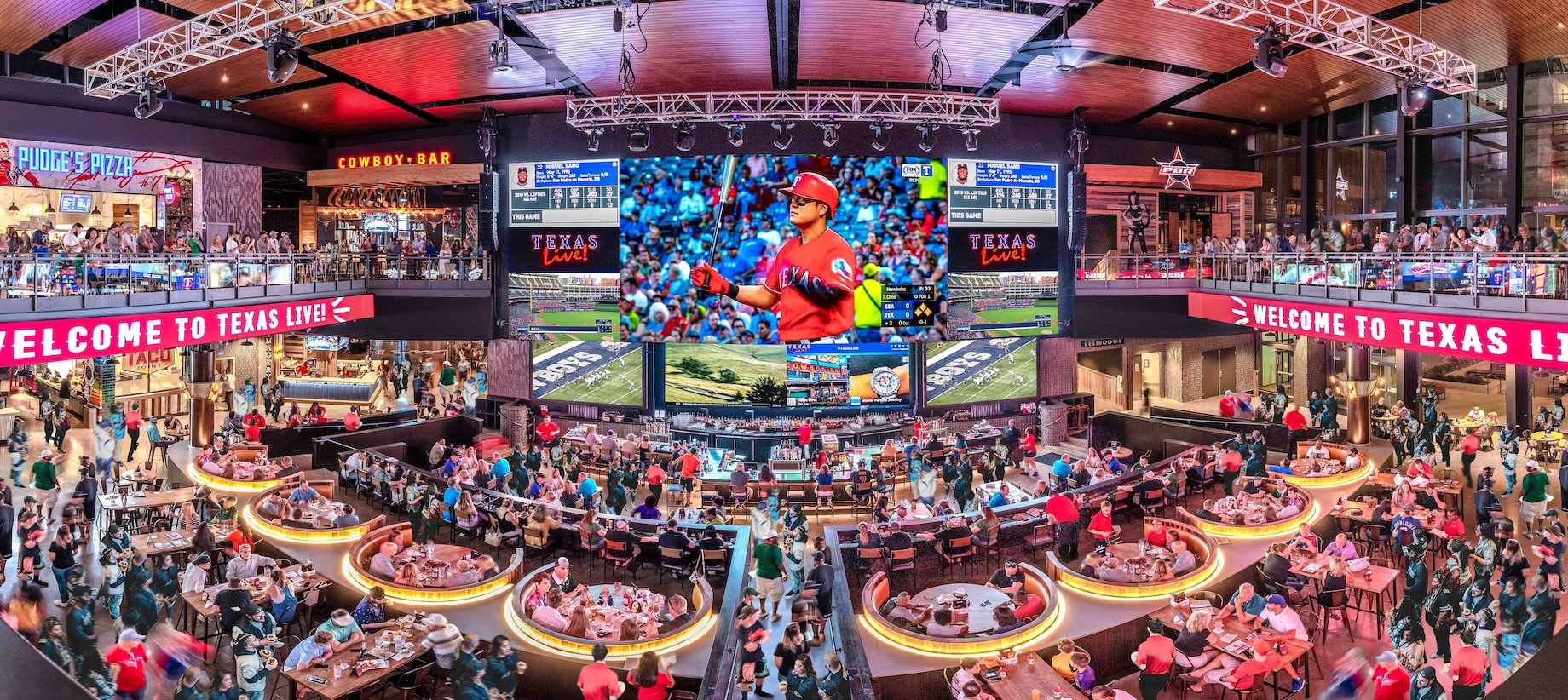The Cordish Cos. has become a heavy hitter in the entertainment and sports-anchored destination market, known for turning historical and outdated spaces in downtowns into thriving mixed-use developments. Its Live properties like Xfinity Live in Philadelphia, Kansas City Live, Bally Sports Live in St. Louis and Texas Live in Arlington, Texas, welcome more than 55 million visitors a year at locations. Commerce + Communities Today contributing editor Beth Mattson-Teig talked with COO Zed Smith about the firm’s approach to complex mixed-use projects.

You have an accomplished track record. Can you describe the building blocks that provide a foundation for a good project?
When I joined the company about 25 years ago, the thing that drew me was the fact that we had leadership here that really believed in cities, that cities could be places that are all things to all people, that could be dynamic, that could serve as a catalyst and vehicles for people to come together and experience all the good things that cities can offer. So that’s the cornerstone of our business: that belief that cities are good, they’re dynamic, they can create change and create harmony.
Our success starts with the leadership of a city. What’s the vision of that particular city? Whether it’s the mayor or city council or directors of economic development, it’s important for us to stay true to that vision. Cities have great landmarks, great buildings, great restaurants. We want to bring all of that to bear in the developments that we undertake. We want to build on the identity of that city. What’s good, what’s working and how do we make it better? How do we bring pride to that city? The things that we focus on when we’re planning is to ensure that we maintain the character of that city. It’s important for people to enjoy and experience the city to its fullest. There has to be some character that has to be maintained, and we do that in our developments.
You have a variety of Live locations across the country. Is there anything that ties them together or that you look for in choosing those locations?
In the case of our sports-anchor developments, you have a good running start because they’re already attracting thousands of people. What’s absent there is an extension of that experience. So when you look at a city like St. Louis … you have the Cardinals, which is a great brand with great fans, but oftentimes in the sports situation, once you leave the stadium, you go home. What the Cardinals wanted to do is extend that fan experience. It started with Ballpark Village, which is Live entertainment really centered around sports, not only with the Cardinals but all sports in St. Louis. The team being the anchor gave us a running start. We built on that brand, and after about 10 years, we’re now doing residential, we’re doing office and we keep expanding the footprint, but all to complement what’s already a great brand.
It doesn’t sound like a cookie-cutter process. How do you come to understand the DNA of the local market?
It starts with our partner. These are sometimes public-private partnerships when you’re dealing with the city. In the case in St. Louis, we were dealing with the Cardinals, as well as the city. You start with asking the right questions. What’s important to the end user? And you assess the landscape. In St. Louis, downtown entertainment was missing. We happen to specialize in that, and that becomes the engine that drives everything. At our projects across the country, all of them started with some type of entertainment component, and that becomes the engine and the gathering place. That is very traditional to our approach to development. There’s generally a void of entertainment, whether it’s restaurants, food-and-beverage or live entertainment. We have become experts in those areas. We have built our team to support those areas of development, and they become the cornerstone of our projects.
What has changed in entertainment districts and mixed-use destinations recently, especially post-COVID?
We pretty much stay true to what we’ve been doing, but we’re always trying to make it better. We believe that cities will always be the gathering places. They will always be the core of entertainment, whether it’s the arts, whether it’s music, whether it’s food-and-beverage. Cities will always be strong and yes, we’ve had some weak moments given COVID and cities might be very different in terms of the availability of space, particularly in the office area, but these buildings will be repurposed. In Baltimore … we’re thinking through different uses of buildings. Because we’ve been operating in various areas — whether it’s residential, co-working, food-and-beverage and retail — we’ve been able to adapt very quickly and shift very quickly, so we think that we’re in a good position as we look to the future. And I think cities will adapt. People will always want to come to cities to have very unique and different experiences.
“We believe that cities will always be the gathering places.”
What’s in your pipeline these days?
We purchased a casino just outside of Texas in Bossier City, Louisiana [for a major redevelopment]. We also are expanding, the Sports & Social and PBR Cowboy brands. That’s been very popular in suburban markets. We continue to develop with a major expansion in Arlington, Texas, with our partners, the Texas Rangers. We’re doing about $1 billion of development there. In Pompano Beach, Florida, we have a project that is about 200 acres of development underway. Over the last 10 years or so, we’ve been looking at development opportunities that offer us a longer runway. We’ve developed internally the ability to develop all types of real estate uses. So we can do it all, and we have the land opportunities to develop over long periods of time.

The Cordish Cos. plans to redevelop Diamond Jacks Casino & Hotel in Bossier City, Louisiana, into a Live casino resort and entertainment destination. Subject to approval by the Louisiana Gaming Control Board, it would open in 2025. Credit: The Cordish Cos.

The Cordish Cos.' Texas Live
What’s the biggest challenge in developing some of these very large iconic projects? Is it assembling land, or putting partnerships together?
We’ve been very fortunate because we’re working with sports teams that have excess land, and a lot of teams are looking at developing the land around their stadiums. So it’s about being at the right place at the right time. We were very successful with our first venture in St. Louis, and that ultimately led to other opportunities with professional sports teams. We saw the opportunity and we began to work on those relationships, and it has worked out well for us. In cities, it’s a little different. Typically, it would be the city economic development office reaching out to us for development opportunities. Oftentimes, there’s just not enough land to develop the kinds of projects that we want to develop. We were very fortunate in Kansas City where we had a 14-city-block opportunity. That was 10 years ago, and we are very fortunate that we can still continue to develop in St. Louis. That was a situation where we got very lucky and the city came to us at an opportune moment where they had control of the land. We were able to enter into an agreement, and we’ve been developing there for the last 12 years now.
The industry has been talking about live-work-play developments for some time. Has that trend shifted at all, or is it ongoing?
It’s a bit of both. What we’ve been able to do is bring it all under one umbrella, one developer. We talk about live-work-play, but oftentimes those experiences are being curated or created by others. What we’ve been able to do is curate experiences. You can live in one of our residences. We can curate a meal for you and your friends at one of our restaurants. If you live in one of our buildings and you need conference space, you can do that at Spark, our co-working concept. If you want to go to a baseball game, we can get you tickets. It is all under one brand, and if there’s anything that we can do to enhance your experience, we have the ability to do that within the brand.